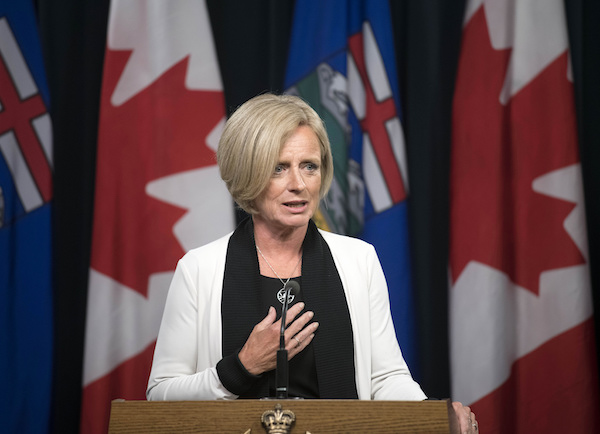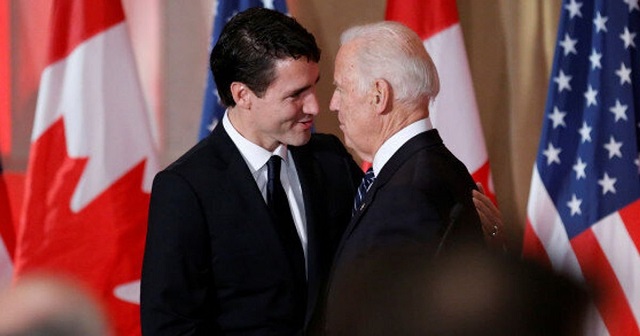Alberta
Red Deer Regional Hospital redevelopment cash needed now – Rachel Notley

From the Alberta NDP
KENNEY MUST REVERSE HIS BROKEN PROMISE AND FUND THE REDEVELOPMENT OF THE RED DEER REGIONAL HOSPITAL: NDP
Alberta’s NDP are calling on Premier Jason Kenney to fund the redevelopment of the Red Deer Regional Hospital after breaking his promise to do so by not funding the project in this year’s budget.
In February 2020, Kenney promised $100 million towards a full redevelopment project with construction starting in 2021. However, the UCP’s most recent Capital Plan only provided $5 million for the hospital redevelopment this year.
“You cannot start construction on the expansion of a major hospital with $5 million. Promise made, promise broken by Jason Kenney,” said NDP Leader Rachel Notley.
“Red Deer Regional Hospital is a crucial healthcare facility, not just for the people of the City of Red Deer, but for families right across Central Alberta. But the city and the region have outgrown the hospital. We need more capacity in the emergency department and we need more specialized care,” said NDP Infrastructure Critic Thomas Dang.
“Now more than ever we all understand just how critical hospital capacity is. Jason Kenney promised to redevelop the Red Deer Hospital, but like so many of his promises, he has failed to deliver.”
Red Deer Hospital did not receive the promised funding to begin construction despite UCP MLA for Red Deer-South Jason Stephan campaigning on a promise to advocate for an expanded hospital.
“Jason Stephan has spent more of his time seeking to expand the number of people who will need the current hospital rather than expanding the actual hospital. He took an international Christmas vacation while the rest of us were locked down and many Alberta families made excruciating sacrifices. Now he’s publicly undermining the health measures that we all need to uphold to keep our families friends and communities safe,” said Notley.
“It’s an incredible failure of leadership from Jason Kenney to abandon his promise to the people of Red Deer to expand this hospital and then allow a quarter of his caucus to put lives at risk in Red Deer and across Alberta.”
Alberta
Alberta government should eliminate corporate welfare to generate benefits for Albertans

From the Fraser Institute
By Spencer Gudewill and Tegan Hill
Last November, Premier Danielle Smith announced that her government will give up to $1.8 billion in subsidies to Dow Chemicals, which plans to expand a petrochemical project northeast of Edmonton. In other words, $1.8 billion in corporate welfare.
And this is just one example of corporate welfare paid for by Albertans.
According to a recent study published by the Fraser Institute, from 2007 to 2021, the latest year of available data, the Alberta government spent $31.0 billion (inflation-adjusted) on subsidies (a.k.a. corporate welfare) to select firms and businesses, purportedly to help Albertans. And this number excludes other forms of government handouts such as loan guarantees, direct investment and regulatory or tax privileges for particular firms and industries. So the total cost of corporate welfare in Alberta is likely much higher.
Why should Albertans care?
First off, there’s little evidence that corporate welfare generates widespread economic growth or jobs. In fact, evidence suggests the contrary—that subsidies result in a net loss to the economy by shifting resources to less productive sectors or locations (what economists call the “substitution effect”) and/or by keeping businesses alive that are otherwise economically unviable (i.e. “zombie companies”). This misallocation of resources leads to a less efficient, less productive and less prosperous Alberta.
And there are other costs to corporate welfare.
For example, between 2007 and 2019 (the latest year of pre-COVID data), every year on average the Alberta government spent 35 cents (out of every dollar of business income tax revenue it collected) on corporate welfare. Given that workers bear the burden of more than half of any business income tax indirectly through lower wages, if the government reduced business income taxes rather than spend money on corporate welfare, workers could benefit.
Moreover, Premier Smith failed in last month’s provincial budget to provide promised personal income tax relief and create a lower tax bracket for incomes below $60,000 to provide $760 in annual savings for Albertans (on average). But in 2019, after adjusting for inflation, the Alberta government spent $2.4 billion on corporate welfare—equivalent to $1,034 per tax filer. Clearly, instead of subsidizing select businesses, the Smith government could have kept its promise to lower personal income taxes.
Finally, there’s the Heritage Fund, which the Alberta government created almost 50 years ago to save a share of the province’s resource wealth for the future.
In her 2024 budget, Premier Smith earmarked $2.0 billion for the Heritage Fund this fiscal year—almost the exact amount spent on corporate welfare each year (on average) between 2007 and 2019. Put another way, the Alberta government could save twice as much in the Heritage Fund in 2024/25 if it ended corporate welfare, which would help Premier Smith keep her promise to build up the Heritage Fund to between $250 billion and $400 billion by 2050.
By eliminating corporate welfare, the Smith government can create fiscal room to reduce personal and business income taxes, or save more in the Heritage Fund. Any of these options will benefit Albertans far more than wasteful billion-dollar subsidies to favoured firms.
Authors:
Alberta
Official statement from Premier Danielle Smith and Energy Minister Brian Jean on the start-up of the Trans Mountain Pipeline

-

 Education17 hours ago
Education17 hours agoSupport a young reader through the Tim Hortons Smile Cookie campaign
-

 Automotive2 days ago
Automotive2 days agoVehicle monitoring software could soon use ‘kill switch’ under the guise of ‘safety’
-

 Business2 days ago
Business2 days agoWhen politicians gamble, taxpayers lose
-

 Addictions2 days ago
Addictions2 days agoCity of Toronto asks Trudeau gov’t to decriminalize hard drugs despite policy’s failure in BC
-

 Opinion1 day ago
Opinion1 day agoClimate Murder? Media Picks Up Novel Legal Theory Suggesting Big Oil Is Homicidal
-

 Bruce Dowbiggin2 days ago
Bruce Dowbiggin2 days agoIt Gets Late Early These Days: Time To Bounce Biden & Trudeau?
-

 Economy1 day ago
Economy1 day agoOttawa’s homebuilding plans might discourage much-needed business investment
-

 Energy18 hours ago
Energy18 hours agoNet Zero’s days are numbered? Why Europeans are souring on the climate agenda






